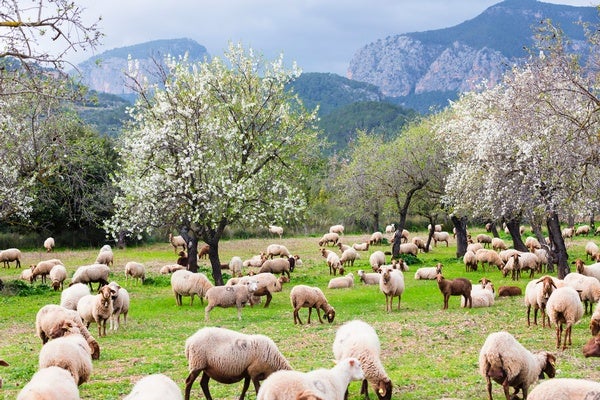
Conventional farming can be hard on land: clearing forest for crops, excessive tilling and continuous cultivation all cause the earth to lose fertility, productivity and the ability to retain water—all of which endangers crops and therefore farmer incomes. Degraded land is a worldwide crisis: The FAO estimates that a quarter of the world’s land is highly degraded or in danger of becoming so. In Africa, where 80 percent of farms are small plots of about five acres or less, 65 percent of arable land is degraded. In economic terms, the effects of land degradation are equivalent to $6.3 trillion a year of impaired ecosystem function—increased costs for fertilizers or money spent on irrigation equipment, for example.
How can we revitalize degraded land? Agroforestry, the practice of growing trees with crops or livestock, provides one elegant solution. The benefits of agroforestry are numerous: tree roots anchor soil, preventing erosion; leaves and pruned branches from the trees become a mulch that reduces soil runoff and erosion, eventually decomposing into an organic litter layer that enriches soil. And many trees species used in agroforestry are nitrogen-fixing, replenishing this key nutrient to the soil. Finally, soils rich in organic matter hold more water, which permits more and healthier plants. These remarkable changes brought about by the inclusion of trees—improvements in ecosystem services like water retention, soil fertility, and reduced erosion—are key to restoring a landscape to productivity.
Not only can agroforestry help address the land degradation crisis, it can also help answer the call for natural climate solutions. Trees on farms sequester carbon dioxide from the atmosphere, just as forest trees do. While forest restoration as a natural climate solution has been much in the news lately, many policy makers still see it as a threat to food production (one need only look to Brazil to understand the challenges associated with balancing forest and agricultural lands). With agroforestry, we find a compromise between farms and forests that supports food and livelihood needs while addressing land degradation and climate goals.
Moreover, agroforestry trees can provide tangible, financial benefits to farmers. Branches of trees can provide cost savings on firewood or construction materials; leaves, seeds and fruits can be used for livestock fodder. Fruits or nuts can be used for household consumption or sold for additional income—and having a second revenue stream can protect farmer incomes when primary crops fail or when markets dip. The organic matter provided by trees can reduce the need for fertilizers, and increased biodiversity on farms may reduce the prevalence of pests. This means farmers can realize a cost savings on agrochemicals, while also reducing their own exposure to such chemicals. In one study of coffee and cocoa farms, costs on those farms practicing agroforestry were on average 13.2 percent lower than on conventional, full-sun farms—and the shaded systems were more profitable.
There is also evidence that agroforestry can increase yields on farms. In an example from Malawi, maize intercropping with nitrogen-fixing trees led farmers to double their yields, without the added input (and cost) of mineral fertilizers. And in a similar trial of intercropping trees and maize in southern Malawi and eastern Zambia, yields with agroforestry trees were shown to be more stable over time.
But agroforestry is not always easy to implement. For farmers, the long lag time between planting trees and reaping the benefits can serve as a disincentive. Moreover, there are larger, more systemic challenges that can arise with the questions of land or tree ownership: Why would a tenant farmer invest time and money in planting trees on land she doesn’t own? In other cases, governments may provide financing for conventional agriculture, thus encouraging damaging practices over restorative ones. Agroforestry as a land restoration solution works best and at the necessary scale if the greater legal and policy environment supports agroforestry designs.
If we want greater agroforestry adoption to restore land and combat climate change, then the need for an enabling policy environment is of paramount importance. We need governments to more broadly acknowledge agroforestry’s potential for greater food production, land restoration and carbon sequestration. And following that, we need to develop just and inclusive incentive schemes, coupled with support for farmers, to encourage sustained adoption of agroforestry systems.
In a hopeful example from Guatemala, a recent national-level law called PROBOSQUE incentivizes tree planting and restoration, with a goal of establishing three hundred thousand hectares of agroforestry systems. The law makes tree-planting incentives available to people who are not landowners, providing support to land tenants, cooperatives and indigenous people.
Agroforestry alone isn’t a solution to the climate crisis or land degradation, but its benefits make it a potent tool to use alongside other strategies. We need to push for greater adoption of agroforestry—sooner rather than later.
"can" - Google News
December 12, 2019 at 07:00PM
https://ift.tt/38t2lfk
Farming Degrades Land; Farming Can Also Bring It Back - Scientific American
"can" - Google News
https://ift.tt/2NE2i6G
Shoes Man Tutorial
Pos News Update
Meme Update
Korean Entertainment News
Japan News Update
No comments:
Post a Comment